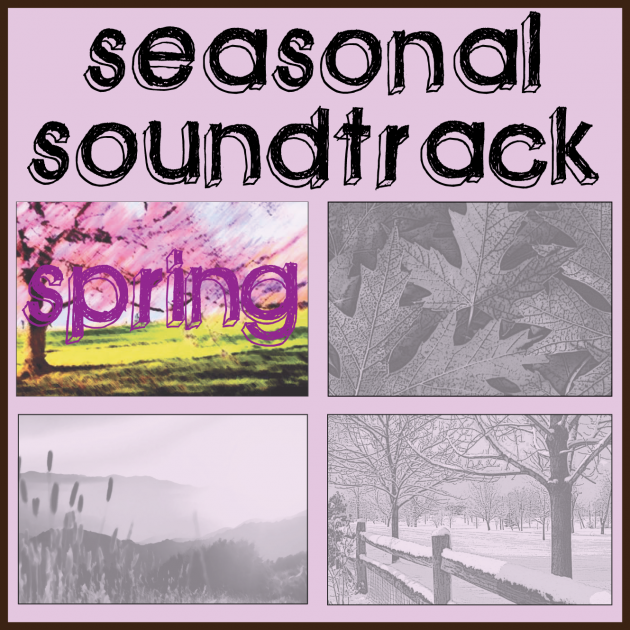
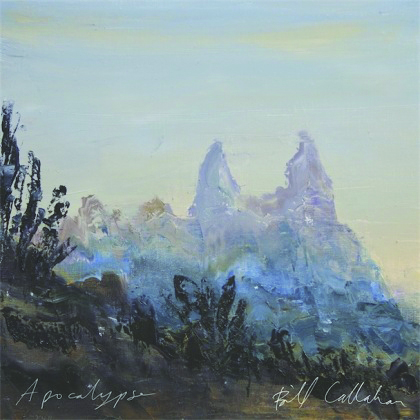
Bill Callahan
Apocalypse
[Drag City; 2011]
When Apocalypse came out last year, I was spending a great deal of time outside after five o’clock so I could get some work done and stay inspired. The album’s message revolves around a semi-narrative of a man drifting from place to place that eventually finds his way back home, yet still free. Springtime is definitely a transition period; that which was cold is coursing back into beauty, you can finally roll the window down and get a reasonably temperate breeze in the car. It’s definitely fair to compare the three different moods of this record to seasonal transitions. “Drover” through “America!” are the periods that revere the harmful travel, “Universal Applicant” and “Riding for the Feeling” act as the realization of what wrong has been done to both himself and the people around him, and “Free’s” and “One Fine Morning” are the album’s resolution. He has found where he belongs and has finally forgiven what he has done. The sound of the record also shifts into a more acoustic reliant mode half-way through, eliminating the eeriness of songs like “Baby’s Breath”. Apocalypse simply does a fantastic job emulating the transition between frozen and emotionless to extremely human and beautiful.
– Andrew Halverson

Blonde Redhead
23
[4AD; 2007]
Blonde Redhead’s 23 is considered the album that garnered the New York-based trio mainstream success as well as the beginning of a shift in their sound. As the spring season symbolizes rebirth and growth, so too does 23 represent a growth in terms of style. Whereas their earlier albums were rooted in the noise-rock category, this marked the beginning of a shift towards a more dream-pop sound. From start to finish, each song is highly textured – from lush guitar-driven melodies and electronic soundscapes to the subtle percussion and Kazu Makino’s ethereal vocals. The spring season is the time of the year where nature’s beauty shines brightest and Blonde Redhead certainly draws a parallel to that with 23.
– Ace Ubas

Brian Eno & Harold Budd
Ambient 2: The Plateaux of Mirror
[E.G. Records; 1980]
To be honest, it was a tossup between this and 1984’s The Pearl. But I ultimately chose to include The Plateaux of Mirror in this feature because of its pastoral delicacy and modest blend of Budd’s piano and Eno’s electronic acumen, manifested here in both quiet synth sighs and atmospheric treatment of Budd’s organic musicianship. This album is the sound of a refreshing breeze flowing across a field of wildflowers; it’s the smell of freshly cut lawns, an annual vernal revelation; it’s the sight of cirrus clouds drifting across a sky lit by a propitious sunrise. It’s quite pretty, in other words, and for the purposes of a spring soundtrack roundup, this superficial pulchritude is all the justification it needs. Your grandparents would probably enjoy this album. Play it for them next time you see them; it’ll be a bonding experience.
– Joshua Becker

Bright Eyes
I’m Wide Awake, It’s Morning
[Saddle Creek; 2005]
Autumnal album cover colors aside (how’s that for a tongue twister?), everything about Bright Eyes’ I’m Wide Awake, It’s Morning feels like a new warmth. Granted, just about every song Conor Oberst has ever written could be just as easily tucked into winter, but with all its many reasons for severe seasonal depression, there’s something wildly optimistic tucked beneath the surface. For an album that starts off with a plane tumbling to its demise, it isn’t exactly instinctual to think of this album as wide-eyed on the surface. But it is. Trust me. Underneath all the horrifying gravity, there lies reassurance that no matter how crummy you may feel right now — and Oberst certainly feels crummy — there are better things ahead. Isn’t that what spring is all about?
– Andrew Bailey
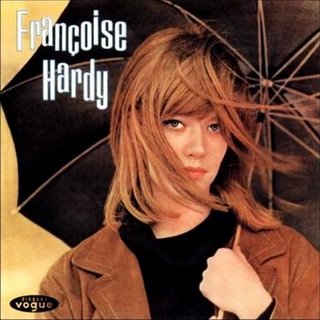
Francoise Hardy
Tous les garçons et les filles
[Vogue Records; 1962]
I was initially directed toward the work of Francoise Hardy on the recommendation of Beach House, and “Le Temps De L’Amour” was featured in the trailer for Wes Anderson’s upcoming film Moonrise Kingdom. If those two references aren’t enough to convince you to check out the work of this French singer-songwriter, then what I say probably won’t convince you much more, but this album seems more suited for springtime than much of the music in my library, despite the fact that I can’t understand much of what Hardy is saying due to the language barrier. There’s something about the production of the album, in its guitar tones and its generally happy outlook, that seems to have informed much of the brighter sides of indie pop in existence today and this album saw the light of day 50 years ago. It’s an album full of life, happiness, and warmth–a perfect accompaniment to the season that drags us from the dregs of winter.
– Colin Joyce
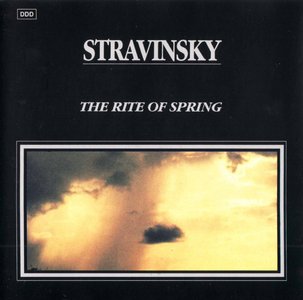
Igor Stravinsky
The Rite of Spring
[1913]
Despite being almost a century old, Stravinsky’s iconoclastic ballet score still has the power to shock. The Rite of Spring is about as far as it is possible to get from some of the other famous depictions of the same season that I could have mentioned here. Stravinsky managed to pack in a bewildering array of modernist orchestral colours and techniques into just half an hour of music, creating a piece that is startling in its originality, yet utterly accessible and compelling. The composer’s bold orchestration, brutal rhythms and burbling textures brought the world of ancient pagan Russia vividly to life, creating a soundworld so startling that it started a riot in the theatre – or so the legend goes. Stravinsky’s spring is a time of violence, magic and death, contrasting starkly with more familiar connotations of new life and rebirth which often accompany this season. For many people, the first encounter with this music comes via Disney’s Fantasia, but the story of the original ballet is more disturbing, concerned as it is with a young girl who dances herself to death as part of a religious ritual. If you only ever listen to one piece of 20th century classical music, make it this one. There are many famous recordings of the piece, but since Stravinsky himself conducted it occasionally, why not listen to his personal rendition? Or, if you’d rather get a sense of the artistic whole (or Gesamtkunstwerk, if you want to be super-classical about it), have a look at the reconstruction of the original choreography, or Pina Bausch’s extraordinary reinterpretation of the piece.
– Jack Spearing
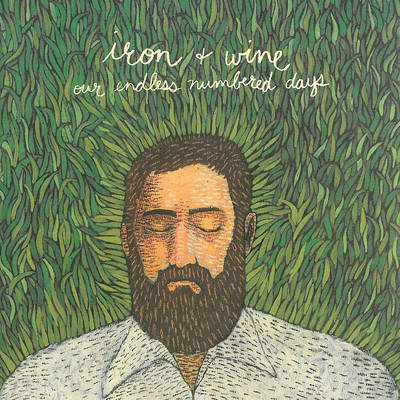
Iron & Wine
Our Endless Numbered Days
[Sub Pop; 2004]
For a long time, spring was linked to the end of the school year, and I still have trouble shaking that sense of finality when June rolls around. Our Endless Numbered Days is an album about love and death, but not in the dark, melancholy way that would make it a winter album. Instead, it’s peaceful and sentimental with all the comfort of an easy spring breeze. Sam Beam is at his smoothest and quietest here, picking through crisp riffs and employing the trademark breathy whisper of singer-songwriters. When on “Naked As We Came,” he sings “One of us will die inside these arms,” it sounds like a reward. Spring is the rebirth after the winter, and with the right perspective, this is an album that gets you ready to live brand new days.
– Justin Pensacola

Linda Perhacs
Parallelograms
[Kapp; 1970]
Growth and nature drives Parallelograms, the only album ever released by Linda Perhacs. Strange–yet not–taking into consideration its lack of popularity until the musical formation of the internet. It’s unfortunate it took us this long to appreciate how incredibly creative and powerful she was, but there is no doubting the footing that she had on folk music and mood. Many of the songs on Parallelograms are simple, but there are these mysterious, complex tones casted underneath the quiet yet powerful vocals of Perhacs, a singer that never got the career she deserved. Aside from the situation casted over the last four decades, Parallelograms is an event that stays relevant to human ears and consistently draws from the experiences of springtime. Album opener “Chimicum Rain” enters with near-whisper then transforms into a heavy veil of vocals during the chorus, each vocal track hitting the listener like a weighted rain drop into a storm that makes you want to stay inside for just a brief moment. This album isn’t always storms, but it is the colder, wetter part of spring. “Paper Mountain Man” is a stomp in the puddles, “Moons and Cattails” is sitting outside and watching the clouds envelop lunar monuments and bodies, and “Sandy Toes” is a simple stroll through the brush. Parallelograms focuses on itself but speaks the human connection to Spring.
– Andrew Halverson

Lush
Split
[4AD; 1994]
There’s a certain type of warmth that’s only found during the springtime. The temperature is typically perfect to go out for a walk and sometimes a breeze brushes against you. I guess what I’m trying to say is that spring is a season that makes you feel simply comfortable with its natural beauty – and that’s what Lush’s Split does. The London-based quartet is considered one of the first bands to evoke the term shoegaze during the 90s. Lush’s namesake can easily describe Split. But to go more in-depth, it’s an album that’s full of layers and rich textures that sprawl throughout the entire 12 tracks. Miki Berenyi and Emma Anderson’s vocals are pure and, when harmonized, create a surreal experience as found on “Lovelife” and “Desire Lines.” On “Hypocrite” and “Undertow,” the guitar-bass combination creates a blistering wall-of-sound. Not to mention the reverberated percussion that adds to the totality of the ethereal album. Split is a stunning piece in which you can drown yourself in the warm, lively melodies that it provides.
– Ace Ubas

Mew
And the Glass Handed Kites
[Sony BMG; 2005]
And the Glass Handed Kites is arguably Mew’s best album to date. Teetering between dream-pop, post-rock, and even progressive rock, it’s an album that’s really meant to be played in a single sitting. The transitions between songs are seemless and undistinguishable as they flow into each other perfectly. But the real driving force behind this album is Jona Bjerre’s dynamic vocals that span various ranges and moments in which he’s Thom Yorke-esque (J.Mascis also makes an appearance). The crashing drums and mesmerizing melodies from the guitars and keys give the album a very dramatic feel to it. Tracks like “Chinaberry Tree” and “The Zookeeper’s Boy” exemplify where the melodies soar to high peaks that they’re borderline cathartic. In relation to spring, And the Glass Handed Kites is full of life, and remains fresh and potent with each and every listen.
– Ace Ubas
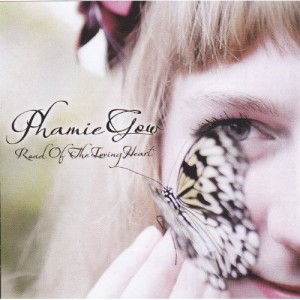
Phamie Gow
Road of the Loving Heart
[Ais; 2011]
Good music evokes the other senses, and Phamie Gow’s 2011 album Road of the Loving Heart conjures up plenty of spring time imagery. “Exile” could well soundtrack a long walk through some woods in the morning, or perhaps even a hike up a mountain, as the last thirty seconds match the sense of breathlessness one is overcome with when seeing an inspiring view and being (quite literally) out of breath. Or there’s “Peace Song” to capture that lazy Sunday feeling as some sun trickles in through your bedroom blinds. The title track might hint at rain, but the warm, natural recordings here keep you feeling secure. Then there’s the three-track “Nocturnal Butterfly” suite, the last of which opens the overall mood up and fades way with a wonderful promise: summer is coming.
– Ray Finlayson

Rocketship
A Certain Smile, A Certain Sadness
[Slumberland; 1996]
If nothing else, this album can serve as a reminder of how great Slumberland Records has been for so long. The organ tones on this album, released in 1997, seem direct ancestors to a more recent Slumberland band, Pains Of Being Pure At Heart. Though where Pains Of Being Pure At Heart ditched their earlier fey intentions for the more 90s rock inflections of Belong, Rocketship embraced the feyness. With tracks like “Kisses Are Always Promises,” Rocketship here dives headlong into the romanticism typical of the twee movement that likely informed their lyrical intentions. It’s a bit shoegaze, a bit of the brightness typical of the Slumberland albums at this time, and it certainly deserves much more attention than it’s given.
– Colin Joyce
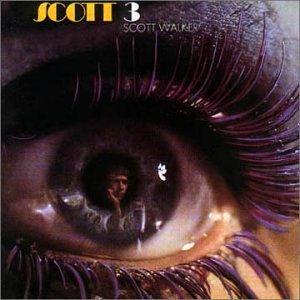
Scott Walker
Scott 3
[Philips/Fontana; 1969]
I had to think about which of Scott Walker’s first four albums actually fits best for the spring (his last three albums, alas, are best kept for the gloomier seasons), as each one could make a valid case. But for a miserable Wednesday in April, as you lay about, watching beads of water trickle down your window, there really is no better song than “It’s Raining Today” from Scott 3. The brilliance of the track goes beyond Walker’s evocative and sentimental imagery; the music actually sounds like the gentle pitter-patter of rain against your window.
The album itself is perfectly apt for the season because it’s a welcome and honest mix of both dark shades and bright streaks. “Two Ragged Soldiers,” “Two Weeks Since You’ve Gone” and the devastatingly beautiful “If You Go Away” continue the melancholic, locked-inside sadness, while the gentle and brief “Butterfly” and the delicate melodies on “Copenhagen” hint at a bright outcome for both Walker’s state of mind and the weather.
Scott 3 goes beyond just giving a soundtrack to a lonely day inside while the rain pours outside. Should you find yourself playing it, take a moment to soak up Walker’s sublime, poetic lyrics that still catch me by surprise. Too often you’re caught up on the way he holds a note, such as the word “carousel” on “Copenhagen,” before the tinkering toybox melody tip-toes into the frame. But pay real attention and you’ll get a line you could only ever dream of conjuring up yourself, like “Your eyes are lanterns growing dim/ I hum inside/ like meadows in Summer/ But I’ll never light them up again”. Every season has its sadness, so why not embrace some of the most beautiful sadness on offer?
– Ray Finlayson
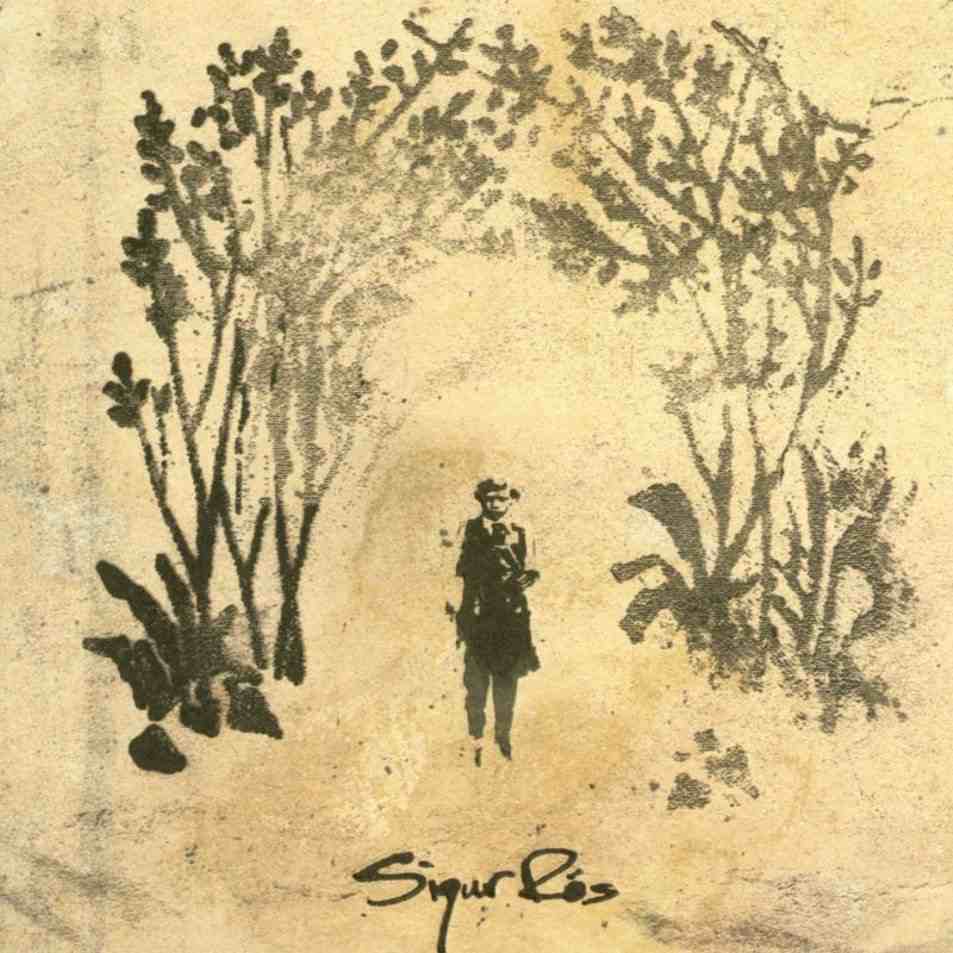
Sigur Ros
Takk
[Geffen; 2005]
Trudging through the dewy, muddy grass on “Glósóli,” Icelandic band Sigur Rós seems to bring the better season with them. The skies are clear after the brightening crescendos on “Svo hljótt” and transfer through to “Heysátan,” where gulls chatter above the careful piano chords, while on “Sé lest” a light and jaunty horn section wanders by after a swell of icy cooing from Jónsi and his band, tinkling glockenspiels and all sorts of bells and chimes. Even when the rain’s been falling there’s still fun to be had, as evidenced by “Hoppípolla” and the way the piano hops about, much like the song’s title (translation: “Hopping into Puddles”) suggests (and video shows us).
The darkness of winter still lingers, though. “Sæglópur” and “Gong” bring some dark clouds, but from each track brightness rises. From the latter, ten-minute centrepiece “Milano” emerges gradually, delivering a staple, by-the-books Sigur Rós track (if there is such a thing, I suppose), while “Gong” calmly drops into the peaceful “Andvari,” which lulls the listener into that earlier mentioned pairing of “Svo hljótt” and “Heysátan.” Even for a band known for delving deeply into gloomy territory ( () ), much like the transition of seasons from winter to spring, the dark clouds have to clear eventually to make way for the blossom-inducing sunshine.
– Ray Finlayson

Swans
White Light from the Mouth of Infinity
[Young God; 1991]
At first, it may seem strange to include something by Swans in a list of spring albums, since spring is generally associated with nice things, like growth and sunlight, and Swans are a band that deals in brutal subject matter. But this is a different kind of spring album. While it is harrowing, like everything else Swans do, it still conveys many of the things that come to mind when you think of spring. The first sound on the album is a baby crying at the start of “Better Than You,” which is as good a way as any to signal a beginning, and the rest of the album consists of some exceptionally bright post-punk. Michael Gira’s menacing voice presides over everything, but instead of having an ominous undertone, the music feels strangely optimistic and life-affirming, especially coming from Swans. Heck, “Song For The Sun” even manages to sound almost joyous, although its lyrics, like most others on the album, send a more depressing message. It’s always fascinating when bright music is married to dark lyrical content, and that’s where White Light From The Mouth Of Infinity excels.
– David Wolfson
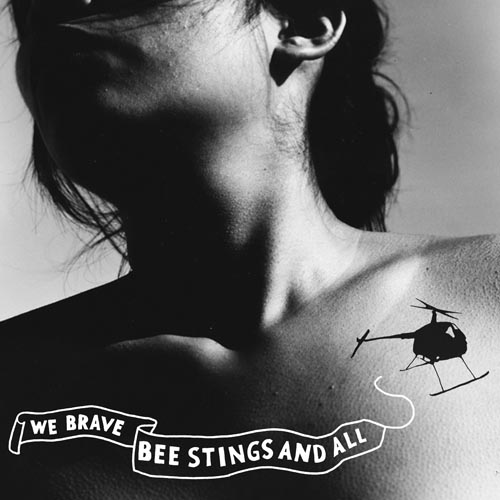
Thao & The Get Down Stay Down
We Brave Beestings & All
[Kill Rock Stars; 2008]
There’s something endlessly fun about We Brave Bee Stings And All. The Get Down, Stay Down is a basic set-up that just seems to plainly enjoy jamming through what would otherwise be restrained folk songs. Thao’s writing and singing, meanwhile, is simultaneously charming and moving. It encompasses both April showers and May flowers. If you’ve ever wondered how fun a sincere song about regret can be, one only needs to listen to “Bag of Hammers,” a plea for reconciliation set to bouncy beats and a “Shake! Shake! Shake!” hook. Elsewhere on “Geography,” lines like, “Are you unhappy for me? I am unhappy for you/ All I can think to do, getcha getcha getcha getcha good” are amusing in the way they seem to fall all over the floor, but it’s a relatable picture of messy emotions. Spring is a feelgood time of year, but not too good. Save that amped-up joy for the coming hot season.
– Justin Pensacola

The Guess Who
The Best of The Guess Who
[RCA; 1990]
The Guess Who aren’t cool. They’re not even cool in an anti-cool way. But that’s exactly why they keep showing up in my springtime mixes. As soon as that sun starts shining, the urge to emerge kicks in, making you want to shed that self-conscious, shoe-gaze sweater in favor of free-wheeling, feel-good foot exposure – no more mood music, I’m ready for fist-pumping and non-stop grinning. All right, all right, all right. Busting out the let’s-love-each-other super sounds of the 70s, The Guess Who’s greatest hits has all the wholesome, soulful yet easy-to-swallow songs you need to clean those mean thoughts away, soundtrack any lazy spring day, and/or destroy the last remnants of your inside voice as you peel outta some parking lot shouting, “DADADOODAH DAAAOOOOOW!”
Prime for pulling into exultant springtime mixtapes or for playing through, The Best of the Guess Who is a mixed bag of every style of old school rock around, from the sweeping “These Eyes” to the flamenco-esque “Undun” to the flower-power drama-rock “Share the Land” and, of course, the always anthemic “American Woman.” My favorite feel-goods include the aforementioned yell-along “No Sugar Tonight/New Mother Nature,” “Hand Me Down World,” and the heartbreaking “Do You Miss Me Darlin’” for those tender moments.
– Kerri O’Malley
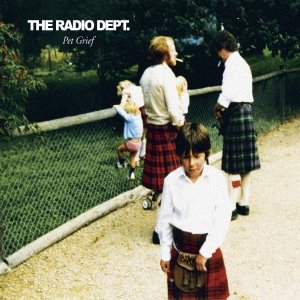
The Radio Dept.
Pet Grief
[Labrador; 2006]
Every sound on this album is delicate and lush, from Johan Duncanson’s aching and heartbreakingly straightforward vocals to the cotton-blend synths, gentle guitars, and active yet understated programmed beats. While this might make for a pleasant yet forgettable listening experience for some, I’ve always found the album to be as repeatedly enjoyable as a bike ride through a garden or an afternoon at a park in bloom. Sure, Pet Grief doesn’t break new ground, but can’t “sounding quite nice” be a noble and legitimate goal in and of itself? Of course, just as April showers occasionally puncture the sunny daylight of spring months, Duncanson’s resigned melancholy keeps Pet Grief from sinking into the saccharine. Case in point: clear highlight “The Worst Taste In Music,” wherein Duncanson allows the titular fact about his ex’s new man to make him feel better about losing his girlfriend. It’s an entirely relatable perspective that the Radio Dept. express with just enough pathos, thanks to dramatic synth strings and an undeniable catchiness not unlike that of the Smiths, who similarly explored the beauty in sadness to thrilling effect. Pet Grief is a work for all seasons, but it’s all the more bittersweet on a springtime afternoon.
– Joshua Becker

Yeasayer
All Hour Cymbals
[We Are Free; 2007]
“Sunrise,” the opening track on Yeasayer’s All Hour Cymbals, is basically spring condensed into four minutes. Sprightly and hopeful, the track serves as the gateway to an album that really helped shape the sound of things to come. Just take a moment to think of how much music has surfaced in the past four-plus years that feels influenced by this record (which I suppose you could argue was influenced by Animal Collective, and so on and so forth). With tracks like “Wait for the Summer” and “Wait for the Wintertime,” there are even built-in spring references to bank on.
– Andrew Bailey

